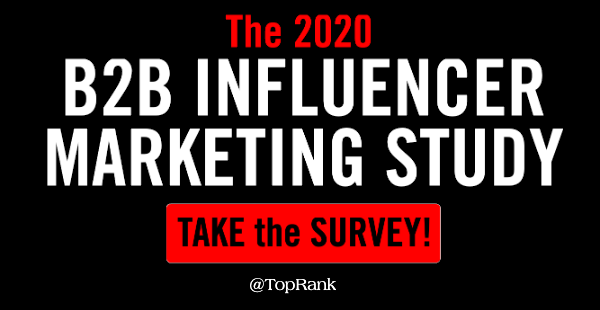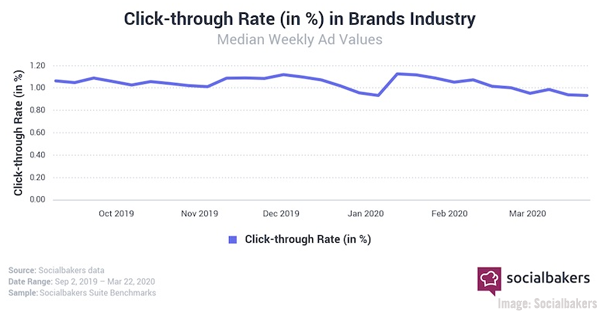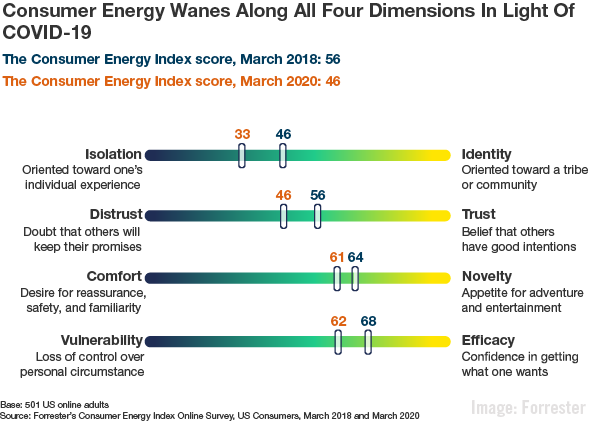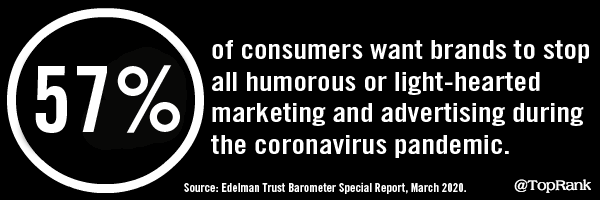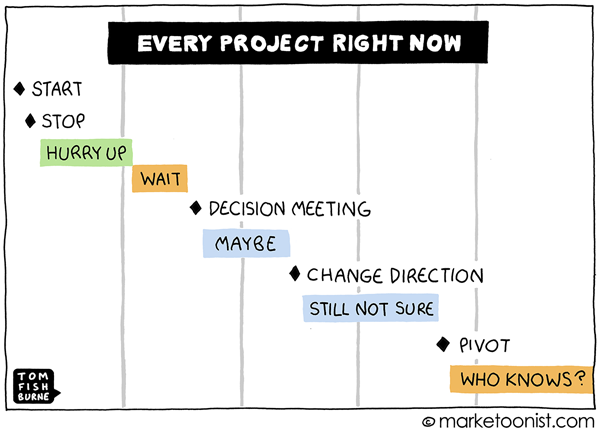https://econsultancy.com/marketing-in-the-new-normal-coronavirus-paul-ralph-consultant-educational-publishing/
Paul Ralph is a marketing consultant in the educational publishing sector (you can check out his website here).
When I put the call out on Econsultancy’s Guild messaging group, to ask our subscribers how their work life has changed in the last month, Paul was quick to offer his thoughts.
Here’s what he had to say about marketing in the new normal…
Please describe your job: What do you do?
I am a self-employed marketing consultant specialising in the Educational and English Language Teaching publishing sectors.
The bulk of my work is around strategic marketing issues. For example, my more recent assignments have included:
- Advising on organisational structure/future marketing capabilities
- Developing a global channel partner strategy for a digital educational product
- Reviewing the global strategy for a specific sector based on a 5-year view of trends in education/technology/marketing etc.
How has your typical day been impacted in the short term by the pandemic?
From August to December 2019 I had no paid work coming in (for no particular reason although the break was welcome). Then from January this year things started cranking up again. Until the pandemic.
The pandemic has caused me to cancel face-to-face meetings and the major teacher’s conference I would have attended in April has been cancelled. This has, in previous years, been my most valuable networking event, and usually one or more major assignments have come about as a direct result of meetings held with exhibitors at the conference.
The big change for me isn’t that I am working from home as I am, by now, used to that. It is that my clients (Marketing Directors, Heads of Marketing) are working from home, as are their clients (Education Managers, Teachers and Learners). Not only are they adapting to the changes involved in working from home but they are respectively having to come to terms with the deeper impact on the business, and adapting to a new way of teaching and learning. This is before you consider wider societal stresses and personal challenges or tragedies; the two biggest markets for UK-published English Language Teaching textbooks are Spain and Italy.
At this time of year my focus would typically be on seeking new business either through approaching existing clients or seeking new ones. As a result of the pandemic my expectations have changed and I do not assume I will get any paid contracts in the coming months. My main objective is stay in contact with existing clients if they want to during this period and to provide support where I can.
I appreciate not all business or freelancers have the luxury of following this approach. It is worth pointing out that this work is not my chief source of revenue and while my aim to is keep active, it is not essential for my financial security to run a full-time business.

What are your favourite tools and techniques to help you get your work done at the moment?
I am used to working from home and use the same basic tools as before. Laptop, phone, Skype, etc. I generally fall into line with my clients’ established modes of communication be it Skype or Google Hangout or whatever. I have not yet tried Zoom. I found the tips in Econsultancy’s recent remote working webinar useful and shared the details with key contacts.
What trends have you seen in the last few weeks in your sector?
In educational publishing marketers are focussing on providing quality free content aimed at supporting teachers, learners, and parents with online teaching and learning. This content consists of videos, blogs, webinars, and lesson ideas and is typically flagged up prominently on the website home page and featured via the existing social media platforms.
Most textbooks now have an online learning component designed for homework if not a full e-book version. Ensuring teachers and learners are supported in making the best use of these digital tools is a priority and there is evidence there has been increased engagement with these resources since lockdown.
Face-to-face professional development events, teaching conferences, author tours etc. have all been cancelled and again, there is evidence that engagement with webinars and e-conferences has increased. The tens of thousands of school sales visits normally scheduled around the world at this time of year have been replaced by phone visits where appropriate or possible.
These are very sensible customer-centric responses to the current crisis, but also relatively tactical. Working out the longer-term implications of the pandemic is a challenge in educational publishing as in all sectors.
While many consumer brands will be experiencing an immediate and harmful drop off in sales (e.g. clothing, hotels, airlines), the consequences of the current crisis are highly disruptive for educational publishing but, the impact is felt differently due to the cyclical nature of purchasing patterns, linked to the academic year.
Mainstream educational publishers are highly dependent on sales of print textbooks sold largely through third party wholesalers (national, regional). The duration of the lockdown and the resilience of these offline channel partners – along with their networks of booksellers – will be key in determining the gravity and depth of the crisis. The textbook business (particularly outside the UK) is cyclical, with a huge chunk of annual sales often condensed into a 2-3 week local back-to-school sales season (typically September/October in Europe).
Managing the supply chain, stock levels, partner relationships and onwards distribution of the print textbooks – along with the underlying assumptions (will schools be open or closed, whether to delay launches or go ahead) will be the largest business challenges faced (in my view). In the worst-impacted markets it is hard to imagine that the launches of new products will not be delayed. Ensuring teaching and learning can resume in the new academic year with the right educational resources either physically in place or available and properly supported online.
What changes are you making to help your brand connect with how people are feeling and experiencing the pandemic?
My starting position is that I am not expecting to pick up any new contracts over the next few months. If I do, it will be an unexpected bonus.
My focus will be on my existing clients and contacts, and quietly letting them know (by personal email) I am there to listen if they want to talk or available if they just need a chat to break up the day.
I am prepared to be generous with my time if that is what the client wants or needs, but I will not pursue them aggressively. When I have useful tools or insights to share (such as the Econsultancy remote working webinar – I will pass it on).
I think humility is important here. As a Sales Director/Marketing Director/Board Member I never went through what my colleagues are experiencing now. So while I can lend a sympathetic ear, I have as much if not more to learn right now from them than they do from me.
Which companies have impressed you since the outbreak?
I thought Mark Ritson’s article In Marketing Week was interesting in this respect. Firms have to balance financial sustainability with a duty of care to their employees and retaining strong customer focus and empathy. There also needs to be sensitivity to stake-holders (not least suppliers and channel partners) and any wider societal issues.
I have been impressed by the flexibility of local businesses in my area to reinvent themselves: restaurants suddenly providing home delivery, food wholesalers delivering directly to consumers (a schools and hotels are all closed), the local fruit and veg market traders delivering veg boxes to your front door. They have all had to transform overnight to direct selling operations often with little or no online shop or ecommerce systems in place. Being linked into local community pages (Facebook and Next Door) have helped them get their message out virally.
In the UK, the citizens’ response to the government’s call for volunteers has been remarkable. It is good to see some firms doing their bit, whether it be cosmetics firms putting aside production capacity for hand sanitiser, fashion businesses making masks and scrubs, or academic publishers freeing access to all research papers relevant to Covid-19. Seeing Tesco make a donation to support food banks via the Trussell Trust is also an example of business taking a wider societal view.
I think the efforts by educational publishers to support teachers, parents, and learners with home learning resources is a decent customer-sensitive response (see Pearson, Cambridge University Press, Oxford University Press).
What does long term planning and strategy look like now at your brand?
I will try to figure out what the longer-term impacts will be on society and educational publishing. It is possible that the digitisation of publishing which has been progressing gradually for at least a decade, will see a permanent step change. Likewise, the relationship between Marketing and Field Sales /educational agents will evolve, with MQLs becoming more significant and more of the customer journey happening online and for a greater percentage of customers.
If these assumptions are correct, what part can I play in helping my clients on their journey? What changes do I need to my offer? Is it something I can deliver alone? Do I need to extend my partner network?
What advice would you give a marketer right now?
- Stay safe, stay sane, seek help if you need it.
- Think customer (always).
- Leaders: be prepared to make some big calls sooner rather than later.
- All marketers: be prepared to be flexible (mindset, responsibilities, ways of working).
- Be more careful than ever around messaging – though careful needn’t mean solemn.
Explore Econsultancy resources
The post Marketing in the new normal: Paul Ralph, freelance consultant in educational publishing appeared first on Econsultancy.
